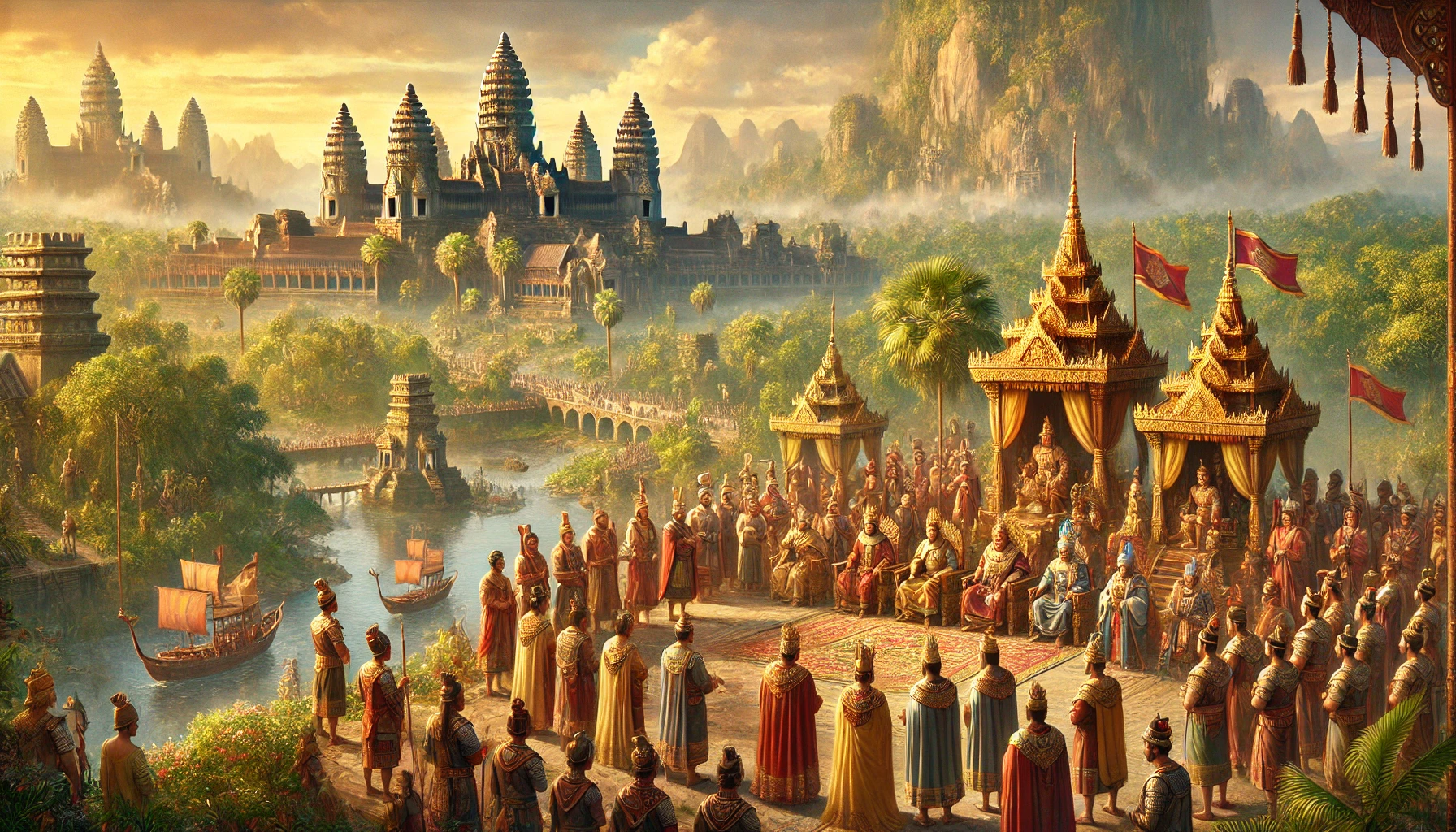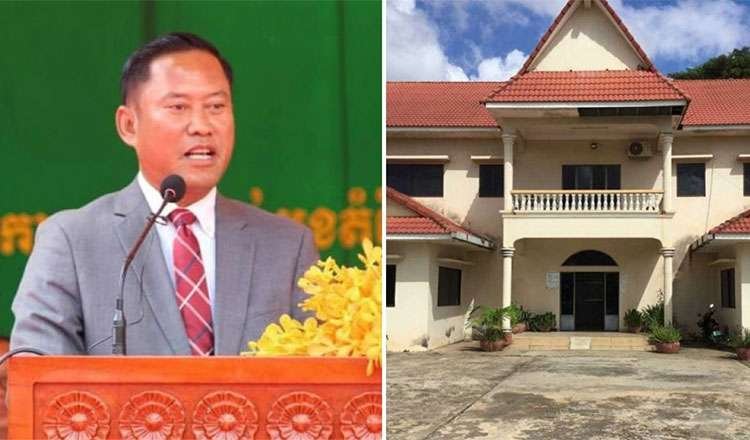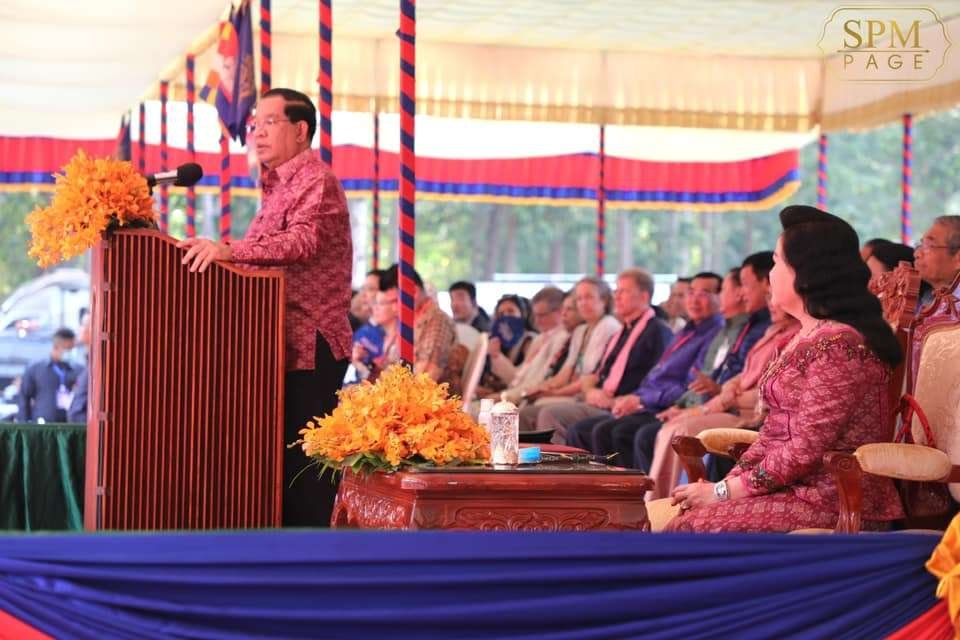The concept of the “Mandala” in Southeast Asian political history offers a fascinating glimpse into how power was organized in a region characterized by fluid borders, overlapping dominions, and diverse cultures. Derived from the Sanskrit word maṇḍala, meaning “circle,” this model describes a system of diffuse and decentralized political power prevalent in medieval Southeast Asia. Unlike the modern understanding of territorial states with clearly defined boundaries and central authority, the mandala system placed emphasis on the central power and its surrounding tributary states, highlighting a more relational and personal approach to governance.
The Concept of the Mandala
In classical Southeast Asia, political power did not stem from strict territorial control or central bureaucracy, as seen in European feudalism or Chinese imperial rule. Instead, power was radiated outward from a central authority, usually the capital or ruling dynasty, through a network of loosely affiliated principalities known as mueang or kedatuan. These peripheral states recognized the suzerainty of a dominant kingdom but often retained significant autonomy. O. W. Wolters, who advanced the study of this concept in 1982, described the political landscape of early Southeast Asia as a “patchwork of often overlapping mandalas.” This system was particularly suited to the geographical realities of the region, where mountainous terrains and vast archipelagos made central control difficult.
This model effectively countered the tendency of modern historians to retroactively impose ideas of fixed boundaries and centralized nation-states on historical polities that operated under far different paradigms.
Historical Application of the Mandala
Historically, many of the powerful kingdoms and empires in Southeast Asia—such as the Khmer Empire of Cambodia, Srivijaya of South Sumatra, Majapahit of Java, and Ayutthaya of Thailand—functioned within the mandala system. These empires exerted influence over a wide array of tributary states through personal relationships between rulers, offering protection and trade opportunities in exchange for tributes, such as the famed bunga mas (flowers of gold), which northern Malay states presented to the Siamese king.
However, the relationship between the overlord and tributary was not purely exploitative. Often, the central power would offer gifts or military protection of greater value than the tribute itself. This arrangement ensured a relatively peaceful coexistence and mutual benefit between the central kingdom and its tributaries, with minimal interference in the latter’s domestic affairs. The tributary ruler was typically free to govern as he saw fit, maintaining his own army and tax system, as long as he upheld his loyalty to the central power.
The mandala system thrived on personal relationships between rulers, rather than between states. This system allowed for fluidity in alliances and political obligations, where a strong ruler could easily attract new tributaries, and a weaker one would see his influence wane. This dynamic was a key factor in the rapid rise and fall of certain kingdoms, as evidenced in the case of Sukhothai, which experienced both meteoric growth under King Ramkhamhaeng and subsequent decline after his death.
Non-Territoriality and Non-Exclusivity
A defining characteristic of the mandala system was its non-territorial nature. Unlike the modern state system, where authority is tied to specific lands and peoples, mandalas focused on loyalty to the central figure—the ruler. As such, rulers only held sway over the towns or regions that acknowledged their supremacy, and not necessarily the entire population of a geographic area.
Additionally, the mandala system allowed for non-exclusive relationships. Tributary states could acknowledge the authority of multiple overlords simultaneously, playing one off against the other to maintain autonomy. This non-exclusivity is exemplified in the Malay Peninsula, where kingdoms like Langkasuka and Tambralinga paid tribute to both the Srivijayan and Ayutthaya mandalas at different points in history.
Decline of the Mandala System
The mandala system, which had long shaped the political and cultural landscapes of Southeast Asia, began to unravel with the advent of European colonialism in the 19th century. The imposition of Western geographical practices, which demanded fixed territorial boundaries and centralized administrations, effectively dismantled the fluid, overlapping sovereignties that characterized mandalas. As the French, Dutch, and British carved out their respective colonies in Southeast Asia, the region’s political map was redefined, and the traditional mandala system was rendered obsolete.
Nevertheless, remnants of the mandala system continued to influence local governance and political structures well into the modern era. In some cases, the structure of Southeast Asian states reflected a continuity of the mandala tradition, where personal relationships between leaders remained key to political alliances, even in the context of modern nation-states.
The mandala political model highlights the unique nature of Southeast Asian political formations, emphasizing fluidity, personal relationships, and non-territorial control. In contrast to the centralized bureaucratic states of Europe and China, the mandala system provided a flexible and pragmatic way to manage power across diverse and often difficult-to-control landscapes. While the system eventually gave way to European colonization and the imposition of modern statehood, its legacy continues to influence the region’s political and cultural landscape. The mandala serves as a reminder that history is not a one-size-fits-all narrative and that different regions have developed their own unique solutions to the challenges of governance and power.
References
- O.W. Wolters, History, Culture, and Region in Southeast Asian Perspectives. Cornell Southeast Asia Program Publications, 1982.
- Sunait Chutintaranond, “Mandala, Segmentary State, and Politics of Centralization in Medieval Ayudhya.” Journal of the Siam Society.
- Martin Stuart-Fox, A History of Laos. Cambridge University Press, 1997.
- Thongchai Winichakul, Siam Mapped: A History of the Geo-Body of a Nation. University of Hawaii Press, 1994.
- S.J. Tambiah, “The Galactic Polity: The Structure of Traditional Southeast Asian State.” Journal of Asian Studies.








